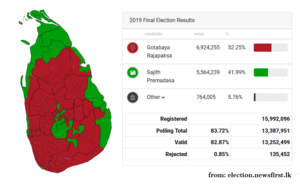Some snippets on Economy, Population. The seeds for the darkest years of our history were being laid. China was lending a helping hand, and India was backstabbing Sri Lanka by training the LTTE.
Sri Lankas population was approx 7 million in 1948
By 1971 had increased 12 million (70% increase)
Until 1967 or so high rubber prices, were able to sustain a welfare system. Free rice etc. Development of better synthetic rubber, dropped natural rubber price.
Sri Lanka economy crashed and unlike now, no one was willing to lend.
A large part of food, including rice was imported. Gal-Oya type scheme (Large dam/Irrigation system, see here for more descriptive) etc was not sufficient for a population that was increasing by the day. There wasnt enough land to go around for the large population increase.
The first big sign of the crisis caused by the population and an economy unable to keep pace was the 71 insurrection by Sinhalese mainly southern rural youth. Once the insurrection was suppressed, Land Reform was put into place and imposed a ceiling of twenty hectares (50 acres) on privately owned land and sought to distribute lands in excess of the ceiling for the benefit of landless peasants.
No foreign exchange, we had to engage in barter, eg the Rubber Rice pact with China. Then as usual the Americans twisted our balls. Their surplus wheat that had gone mouldy was given under PL480. It was not free, SL had to pay for it.
So, we had to learn from scratch, without much capital to be self sufficient.
The economy of Jaffna and the Vanni boomed. Much of the veggies, chillies came from there.
Then in 1977 JR Jayawardene opened up the economy. The farming economy and local industry, collapsed specially in the North. !977 riots, burning of the Jaffna library helped us well on the way to self destruction.
Well worth reading
Prime Minister, Dudley Senanayake, however, fully backed his Minister of Commerce and was prepared to pay this price; he realized that the benefits to Sri Lanka from the agreement far outweighed losses consequent to the cutting-off of American aid. He argued:
“Ceylon’s oil trade pattern has been knocked out by changes in the world market and we have to seek new markets for our needs of essential foodstuffs and for our exports”
R. G. Senanayake: “We noted on the Chinese side the absence of the spirit of bargaining and haggling on comparatively small points. On the other hand, they gave us the impression of being large minded and forthright in their dealings”



